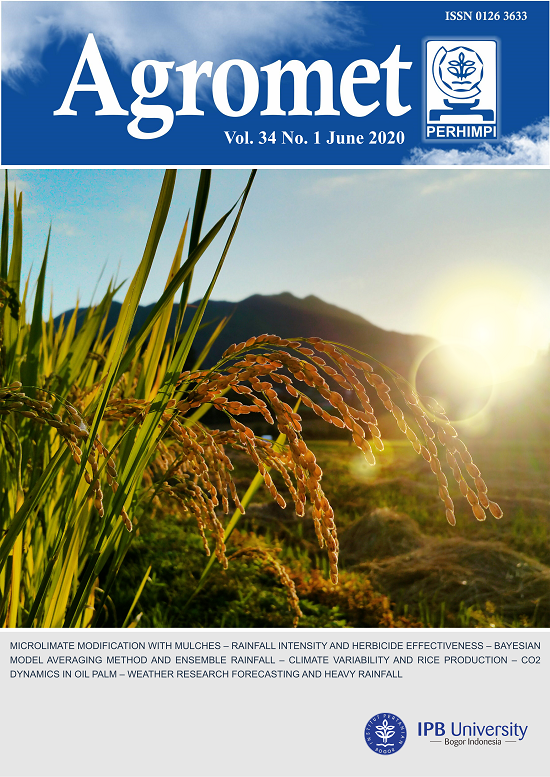Effect of Rainfall Intensity on Glyphosate Herbicide Effectiveness in Controlling Ageratum conyzoides, Rottboellia exaltata, and Cyperus rotundus Weeds
Abstract
Glyphosate is one of herbicide active ingredient which is mostly used to control weeds in crops. However, in rain season herbicide effectiveness decreases as it is washed by rain. This research aimed to study effect of rainfall intensity on the effectiveness of herbicide (Round up 486 SL 2.5 l/ha.) with isopropilamina glyphosate as the active ingredient in controlling specific weeds Ageratum conyzoides, Rottboellia exaltata, and Cyperus rotundus. The experiment was consisted of six treatments and arranged in randomized block design with 8 replications. The treatments were level of rain intensity which were 5 mm/hour, 10 mm/hour, 20 mm/hour, 40 mm/hour, no rain and control (no herbicide no rain). Rainfall intensity was determined by conducting simulation trials prior to the treatments and applied 30 minutes after herbicide applications. The results showed that herbicide effectiveness decreased as the rainfall intensity incresed, even though with longer time the herbicide was still able to control the weeds. The effect of rainfall intensity on herbicide effectiveness was different for different weeds. Up to intensity 40 mm/hour herbicide was capable to control weeds but with level of weeds destruction 20-60%.

